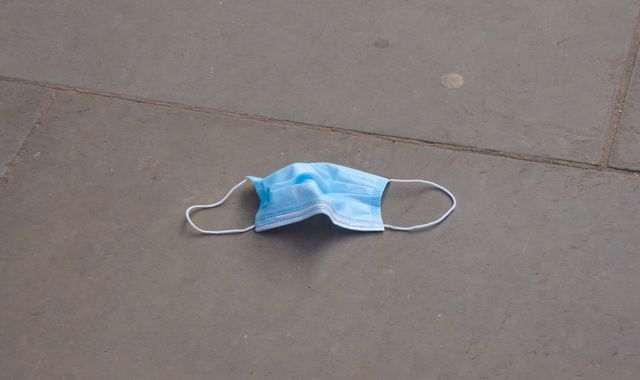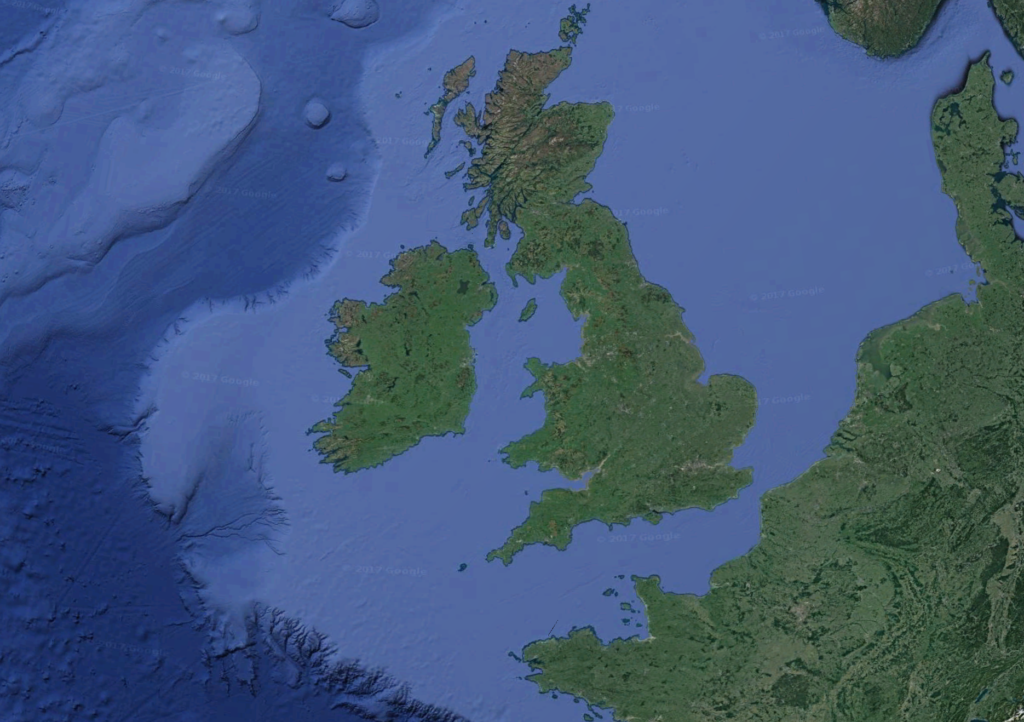Coronavirus: How the COVID-19 death data gets released in the UK
Written by News on 09/05/2020
Each afternoon a seemingly endless stream of figures is published measuring the increase in the number of people with COVID-19 who have died in the UK.


Invariably the totals tick upwards but who is included in them, who compiles them and the period they cover is far from clear.
Add to this the weekly release from the nations’ statistical offices and it can be difficult to know what to make of it all.
So, here is Sky News’ guide to the UK’s COVID-19 death numbers.
There are three main sets of numbers measuring deaths related to COVID-19 in the UK.
The first is the totals provided by each of the four nations, the second is the official daily number released by the Department of Health and Social Care, and the third is the weekly registered deaths published by the Office for National Statistics, National Records Scotland and the Northern Ireland Statistics and Research Agency.
The Nations’ Totals
Scotland
When? Officially 2pm daily but the First Minister often announces it at the 12.30pm news briefing
Source? Health Protection Scotland
Who is included? Anyone in hospital, a care home or elsewhere who tested positive in the 28 days before they died. The death must have been registered with National Records Scotland.
Reporting period? 9am-9am each day
Scotland tends to be the first nation to report each day, with the First Minister announcing the increase and the new total at her daily briefing.
The numbers are reported by Health Boards and compiled by Health Protection Scotland. The deaths must be registered with National Records Scotland.
This registration check was added at the beginning of April after 40 deaths were discovered that had not been reported by a health board. The numbers include all people who have died in Scotland with a laboratory confirmed report of COVID-19, so they cover hospitals, care homes and elsewhere.
The daily increase is the total number of new deaths registered in the previous 24-hour reporting period. Many of the people included in this figure might have died days or weeks earlier because of the time it takes to contact relatives and complete the administration.
The 9am-9am reporting period differs from that used by the Department of Health and Social Care so the daily increase in Scotland is not included in the UK total until the following day.
Wales
When? 2pm daily
Source? Public Health Wales
Who is included? Hospital patients and care home residents who tested positive for COVID-19 and whose doctor believes it was a causative factor in their death. Other settings are not included.
Reporting period? 5pm-5pm each day.
At 2pm each day Public Health Wales updates its COVID-19 dashboard with the increase in the number of people who have died and the new overall total.
Since the beginning of the outbreak, these figures have included hospital patients and care home residents who tested positive for the virus.
Unlike Scotland, Wales does not include people with a positive test who have died elsewhere.
Once again, the time it takes to contact relatives and for health boards to report deaths to Public Health Wales means the daily number can include people who died days or weeks before.
Northern Ireland
When? 2pm daily
Source? Department of Health, Health and Social Care Northern Ireland
Who is included? Anyone in hospitals, care homes or elsewhere who has died within 28 days of a positive test result for COVID-19.
Reporting period? 9.30am-9.30am each day
Northern Ireland’s Department of Health updates its figures for COVID-19 deaths on its dashboard each afternoon from 2pm.
The figures are compiled by Health and Social Care Northern Ireland and include all people who died after testing positive for the virus regardless of where or whether COVID 19 was considered a cause of death. They receive the information from health trusts and regional and local virus laboratory reports.
As with the other nations, people included in the daily increase might have died days or weeks before. The 9.30am-9.30am reporting period differs from that used by the Department of Health and Social Care so the daily increase in Scotland is not included in the UK total until the following day.
NHS England
When? 2pm daily
Source? NHS England
Who is included? Hospital patients who had tested positive for COVID-19 or where COVID-19 was mentioned on their death certificate. Other settings are not included.
Reporting period? 5pm-5pm each day
There are now two daily figures released for COVID-19 deaths in England.
The first of these, which is compiled and published by NHS England, includes only hospital patients who tested positive for the virus or where COVID 19 was mentioned on the death certificate. The deaths are reported to NHS England by individual NHS Trusts via a web-based reporting system.
Each daily figure covers the 24-hour period up to 5pm the previous day.
Confirmation of diagnosis, death notification, death certificates can take several days so the figures include deaths that took place weeks before.
However, NHS England publishes the date of death for all patients, with a regional breakdown, and demographic information about the people who died, including weekly updated breakdowns by ethnicity and underlying health conditions and a daily update on age.
Since 28 April, NHS England has also published the number of patients who died where COVID-19 was suspected but not confirmed. This is not included in the total.
Public Health England
When? Every afternoon
Source? Public Health England
Who is included? Anyone who died in hospital, a care home or elsewhere who tested positive for COVID-19
Reporting period? 5pm-5pm each day
:: Listen to the Daily podcast on Apple Podcasts, Google Podcasts, Spotify, Spreaker
Since 29 April, Public Health England has published a daily figure for the number of deaths relating to COVID-19 which includes all people who tested positive, regardless of where they died. It is compiled from three sources, one of which is the NHS England data outlined above.
The others are confirmed COVID-19 deaths reported to PHE Health Protection Teams (mainly from outside hospitals) and a central database of laboratory results which is cross-checked with patient records.
An automated system checks for errors and duplication.
As with the NHS England figures, the reporting period covers the 24 hours up to 5pm the previous day and deaths included could have happened many days before.
The addition of this Public Health England data series means there are now two totals released each day for deaths in England.
As the cumulative total from PHE includes all settings, it will be higher than the one published by NHS England.
However, the daily increase could sometimes be smaller because some new deaths reported by NHS England could already be included in Public Health England’s total.
The daily UK total
Department of Health and Social Care
When? Every afternoon
Source? Public Health England, Health Protection Scotland, Public Health Wales, Health and Social Care Northern Ireland
Who is included? Anyone who died in hospital, a care home or elsewhere (except Wales) who tested positive for COVID-19
Reporting period? 5pm-5pm each day
Each day the Department of Health and Social Care (DHSC) publishes an updated total for the number of people to have died with COVID-19 in the UK and gives the most recent increase.
This figure used to include hospitals only for England but since 29 April, it has been using the Public Health England data covering all settings.
So, the overall total for UK deaths released each day now includes deaths with a positive test for the virus in all settings, in all nations, except Wales which doesn’t include deaths outside hospitals and care homes.
As the Department of Health reporting period ends at 5pm on the previous day, the latest figures published by Scotland and Northern Ireland are included the following day.
Once again, the daily increase is deaths reported to the DHSC in the most recent period and not necessarily people who died in that 24 hours.
The weekly registered deaths
Every week the statistical agencies in each UK nation publish a figure for deaths registered where COVID-19 was included on the death certificate.
These include deaths where there was not a positive test but where the doctor suspected that COVID-19 might have been a factor. There are three sources, one for England and Wales, one for Scotland and another for Northern Ireland.
England and Wales
When? Every Tuesday
Source? Office for National Statistics
Who is included? Anyone who died in hospital, a care home or elsewhere and had COVID-19 mentioned on their death certificate
The ONS provides a weekly count of all deaths in England and Wales where COVID-19 is recorded on the death certificate, including those where COVID-19 was suspected based on symptoms and/or linked to an outbreak, and not limited to laboratory confirmed cases.
It does this as part of its long-running series recording all weekly registered deaths in the two nations. However, it is not as up to date as some of the other deaths data as it includes only deaths registered up to 11 days before publication.
However, it also compares that to the number known to have happened at the date of release.
Since 28 April, its headline summary has also displayed the total registered deaths in the whole of the UK. The ONS bulletin compares deaths reported by NHS England and PHE by date of registration and by date of death to give a clearer picture of the number of deaths that might not be captured by the daily published total. It is also now working with the Care Quality Commission to publish provisional counts for deaths in care homes.
Scotland
When? Every Wednesday
Source? National Records Scotland
Who is included? Anyone who died in hospital, a care home or elsewhere and had COVID-19 mentioned on their death certificate
Every Wednesday National Records Scotland (NRS) publishes an update on all deaths where COVID-19 was mentioned on the death certificate by the certifying doctor.
This includes cases where infection was a suspected or probable factor. Using the complete death certificate allows NRS to analyse information such as location of death and what other health conditions contributed.
This release is timelier than that of the ONS for England and Wales as it includes deaths registered up to the end of the previous week.
Northern Ireland
When? Every Friday
Source? Northern Ireland Statistics and Research Agency
Who is included? Anyone who died in hospital, a care home or elsewhere and had COVID-19 mentioned on their death certificate
This weekly update from Northern Ireland’s Statistics and Research Agency (NISRA) is based on death registrations collected by the General Register Office.
It counts all deaths where COVID-19 was mentioned on the death certificate by the certifying doctor, whether or not COVID-19 was the primary underlying cause of death.
It covers the period ending on the Friday of the previous week.
Like the corresponding releases in the other UK nations, this one also gives a breakdown by place of death and calculates the difference from the overall figure published by the Department of Health.
Excess Deaths
Crucially the weekly registered deaths published by the ONS, NRS and NISRA also include all deaths registered, benchmarked against a five-year average.
The difference between these numbers is what is called “excess deaths” or deaths that are above what might be expected at the same time of the year.
This is increasingly recognised as the most revealing measure of the impact of COVID-19 and it includes deaths that might have happened indirectly as a result of the pandemic, for example someone whose cancer treatment was delayed.
Each week to date the number of excess deaths in all nations has been higher than the number of deaths suspected to involve COVID-19.
(c) Sky News 2020: Coronavirus: How the COVID-19 death data gets released in the UK







